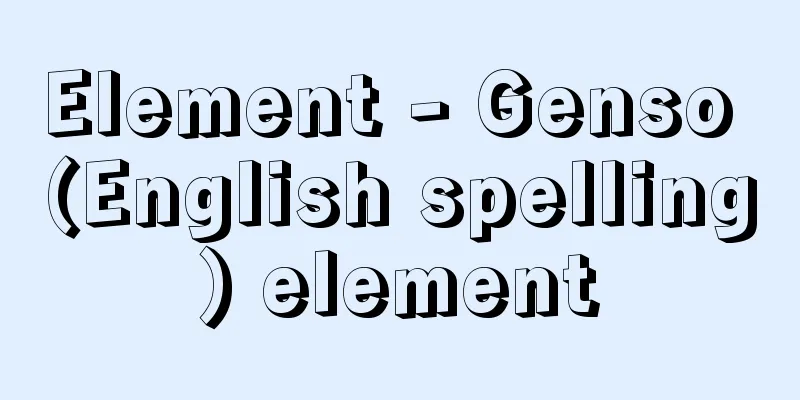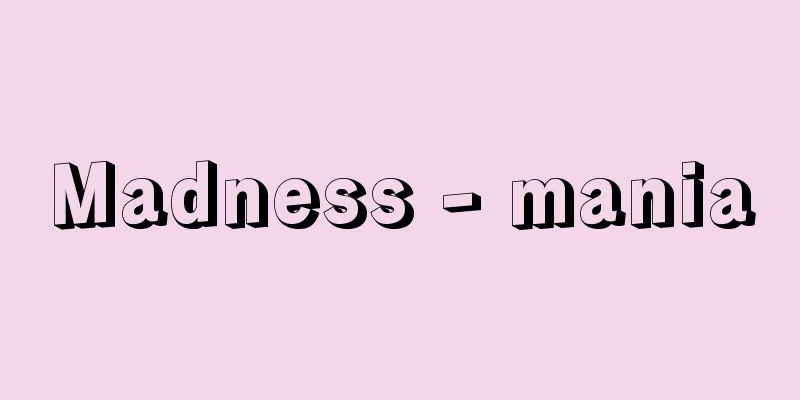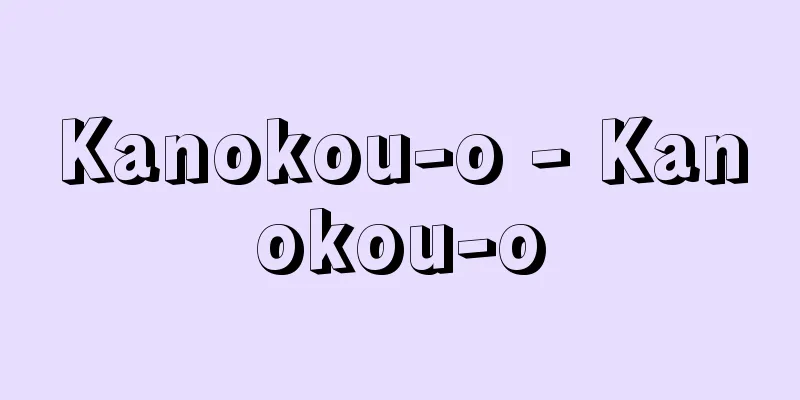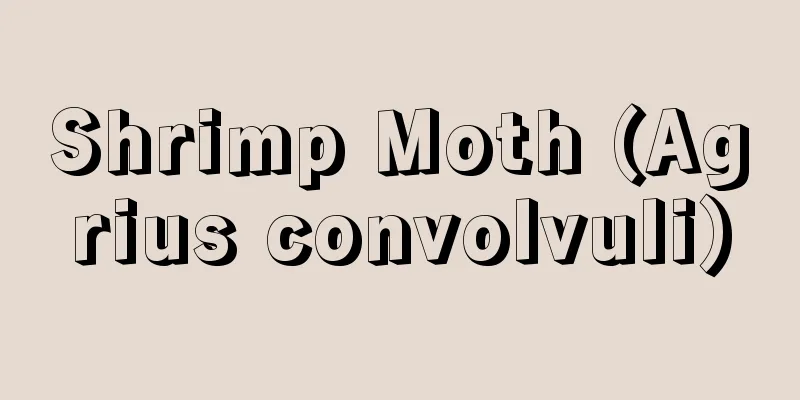Element - Genso (English spelling) element

|
A substance type that is represented by an atom with a specific atomic number. There are as many types as there are possible atomic numbers, and to date, 118 types have been confirmed to exist on Earth, with new elements being synthesized. They are sometimes called chemical elements to distinguish them from other terms, but are usually simply called elements. In the past, an element was defined as a pure substance that could not be separated into two or more substances by any method, nor could it be created by combining two or more substances. However, with the successful artificial transformation of atoms and the discovery of many isotopes, the previous definition became unclear, and by considering atoms as the smallest unit particles that make up matter, attention was focused on the attributes of atoms, which led to a clearer concept of elements. In other words, after it was discovered that the atomic number (the number of charges on the atomic nucleus or the number of electrons outside the atomic nucleus) is a fundamental factor that determines the properties of an element, it became possible to consider using it in the definition. In addition, a substance that consists of atoms of one type of element is called an element, and is distinguished from a compound. An element is a real substance that can be technically separated, but its component elements are things that can be recognized by thought and do not refer to real substances. In other words, an element is one that consists of only one component, and that component is an element. [Nakahara Katsunori] Changes in the view of elements: from ancient times to the Middle AgesThe concept of elements has been around for a very long time, with records of it in ancient China, India, Egypt, and Greece. However, all of these were simply the product of the thoughts of ancient philosophers, and although there are some similarities to the concepts held by scientists today, they have no experimental basis and are essentially different from the modern view of elements. In ancient times, elements were thought to be the fundamental materials that make up matter, moving and changing on their own without the help of gods, and appearing in all kinds of forms, but their essence is unborn and immortal. [Nakahara Katsunori] Thales's MonismThe monism of all things was first born around the 7th century BC as the ultimate substance. Thales of Greece said, "The origin of all things is water. All things are made of water and return to water." In other words, all things in nature, although their forms are infinitely different, are made of only one ultimate substance, and this ultimate substance is immortal and indestructible, and it changes form and appears as a natural phenomenon. This ultimate substance is water. Water becomes ice, steam, snow, and clouds, and is indispensable to living things. For this reason, water in the abstract sense (which seems to represent the properties of water in the ordinary sense) was considered to be the ultimate substance. Later, Anaximenes, also of Greece, considered air to be the ultimate substance, Heraclitus claimed it was fire, and Hesiod thought it was earth. [Nakahara Katsunori] Empedocles' QuaternionThis way of thinking sparked further debate, and various dualisms and quaternions emerged. Around the middle of the 5th century BCE, Empedocles, also of Greece, unified the four monisms mentioned above, stating that the four fundamental substances are earth, water, air, and fire, which are the four fundamental elements of all things, eternal, natural, and incapable of being transformed into each other. When wood is heated, it burns as fire, produces wind (air), produces moisture (water), and leaves behind ashes (earth), which shows that wood is divided into its four components: fire, air, water, and earth. He also believed that earth, water, air, and fire represent solid, liquid, gas, and energy, respectively, and each has properties such as weight, dryness, moisture, cold, and heat, and that these four elements mix with each other through love and separate through hatred, bringing about changes in the world. [Nakahara Katsunori] India and China's view of elementsThe theory of the four elements advocated by Indian philosophers founded by Kapila from the 7th to 6th centuries BCE, and the theory of the four elements advocated by Indian philosophers including Kanada from the 6th to 5th centuries BCE, also stated that all things arise from the four elements of earth, water, fire, and wind. Furthermore, at the beginning of the 6th century BCE, Shakyamuni added space to these four elements to make five elements, and it may be that these Indian views of the four elements or the five elements influenced Greece. The ancient Chinese concept of the five elements (fire, wood, earth, metal, water) can be considered to be the same. [Nakahara Katsunori] Aristotle's unification of the ancient view of elementsThese ideas were summarized by Aristotle of Greece and were believed for a long time until the Middle Ages. Aristotle added a fifth element to the four elements, which he said was the first substance (quinta essentia), the only fundamental material that makes up the world, a possible existence without actual form, and the four qualities of dryness, humidity, coldness, and warmth were added to this to create the four elements of fire, water, air, and earth, which mixed together to create the world. In this sense, Aristotle's idea was a monism based on the first substance. This idea can be said to correspond to the idea of emptiness, which was added to the four elements of earth, water, fire, and wind by Buddha. If emptiness is considered to be the same as Aristotle's first substance, then there is something in common between these views of the elements. However, since metals such as gold, silver, copper, iron, and mercury, as well as carbon and sulfur, were already known at that time, it cannot be said that his understanding of the elements was correct. [Nakahara Katsunori] Alchemists' Attempts at Transforming MaterialsThe idea that the four elements are transformed into each other and create all other substances through the first substance or void has been held for a long time, and it was the medieval alchemists who attempted to transform substances according to this idea. However, alchemists knew more experimental facts than the people of Aristotle's time, and considered more realistic substances than the four elements of fire, water, earth, and air to be elements. For example, Jabir bin Hayyan of Arabia (who is said to have lived in the 8th or 9th century) considered mercury, sulfur, and salt to be three elements (Paracelsus of the early 16th century is also known for this idea, and it is also called Paracelsian ternary theory). It is worth noting that mercury and sulfur are still elements today. Considering that mercury is a metal even though it is liquid, sulfur is a nonmetal even though it is solid, and table salt is a typical salt, the idea of considering them as three elements is close to the modern way of thinking. Of course, this understanding was not clear, and although phosphorus, arsenic, antimony, bismuth, zinc, and many other metals that are now considered elements were known, they were not recognized as elements. [Nakahara Katsunori] Modern view of elementsIt was not until the 17th century that the concept of elements was subjected to scientific examination, and it was the Englishman Boyle who established the modern view of elements that is still used today. [Nakahara Katsunori] Boyle's proposalHe was the first to insist that the determination of elements should be based on experiments, not on mere abstract reasoning. In his famous book, The Skeptical Chemist, he wrote, "All mixed bodies, when broken down, eventually reach primitive and simple substances that cannot be broken down any further. These are the elements." In fact, he devoted most of this book to refuting the Aristotelian theory and the Paracelsian ternary theory that had been considered up until that time. Boyle criticized the ideas of Aristotle and Paracelsus, explaining in detail that it is not possible to determine with certainty that the products of heating existed in the original substance in the form of the quaternary theory or ternary theory, and he brought up the particle theory as the constituent of all matter. Compared to ancient philosophers and medieval alchemists who considered elements by mere abstract reasoning and did not clarify the reasons why they were elements, this idea was truly groundbreaking and can be said to be the foundation of the modern view of elements. However, there was a problem in that this definition used the word element in exactly the same sense as a simple substance. [Nakahara Katsunori] Phlogiston theoryDespite Boyle's scathing criticism, the quaternary and ternary theories continued to be widely believed in different forms. This may have been due to the strong demand for the recognition of simple elements. Nicolas Lemery (1645-1715), a Frenchman who lived in the same era as Boyle, proposed a quinary theory that added water and earth to the three elements of sulfur, mercury, and salt, and about 10 years after Boyle's death, the German chemist Stahl proposed the phlogiston hypothesis, which could be considered a variation of the sulfur ternary theory. The phlogiston theory states that combustible substances contain phlogiston, and that phlogiston is lost when burned. Stahl's phlogiston theory was extremely widely accepted. However, the phlogiston theory was understood in a way that was opposite to that of modern chemistry. Later, while firmly believing in the phlogiston theory, the British Priestley isolated oxygen for the first time in 1771 (although he did not consider it to be oxygen), and published this as dephlogistonized air in 1775. The phenomenon in which metals such as lead and tin turn into metallic ash when heated in air is called calcination, and it was also known at that time that the weight of the metal increases during this process. Prior to this, Boyle had conducted an experiment in which he burned metal in a sealed glass vessel, and explained the weight increase by his particle theory, which stated that it was caused by extremely fine fire particles passing through the glass vessel wall and combining, and those who followed him also gave the same explanation for phlogiston. [Nakahara Katsunori] Lavoisier's Criticism of the Phlogiston TheoryIn response to this, the Frenchman Lavoisier studied the phenomenon of combustion from 1771 to 1774, and was further inspired by Priestley's dephlogistonized air. Finally, in 1777, he revealed that air is composed of two types of gases, only one of which supports combustion, and that combustion and incineration are not the separation of phlogiston, but its combination with oxygen, thereby grasping the true nature of oxygen. It was then for the first time that phlogiston was pointed out to be an imaginary element, air was no longer an element, and a new element hypothesis was proposed. Furthermore, in 1781, Lavoisier came to believe that all acids are combinations of non-metallic substances and gases that support combustion in the air, and named this gas oxygène, an element that produces acids (from the Greek words oxus meaning acid and gennao meaning to produce). The appearance of the name oxygène was of great significance. Meanwhile, earlier in 1769, Lavoisier refuted the claim that water was one of the four elements with his famous Pelikan experiment. The Pelikan is a type of glass still, an experimental device used in the heyday of alchemy. Until that time, it was believed that the earthy substance remaining at the bottom of a glass still when distilling water in a glass still was a product of transformation from water. Lavoisier conducted an experiment in which he heated distilled water in a sealed Pelikan for 101 days, and accurately measured the weight before and after the experiment, finding that it remained unchanged. Furthermore, he found that the weight of the earthy substance when it evaporated to dryness was equal to the weight loss of the Pelikan, proving that the earthy substance was formed when glass dissolved in water. [Nakahara Katsunori] Transitioning into modern times and discovering new elementsIn this way, the element theory was rejected, oxygen appeared as a new element, and gaseous elements such as hydrogen and nitrogen were discovered one after another. This was a major turning point in chemistry, which could be called the transition to modern times. Around this time, it was known that water can be made from hydrogen and oxygen, and that water can be decomposed into hydrogen and oxygen, and an element was defined as the ultimate point reached by analysis, that is, a substance that cannot be decomposed any further by any means (so even if something was an element at that time, it may not be an element in the future). At that time, the word element was used interchangeably with the word simple substance. For example, in the table of simple substances in Lavoisier's "Textbook of Chemistry" written in 1789, there are four types of simple substances classified as shown in . However, it was predicted that the elements in the fourth category would inevitably decompose in the future (a dozen years later they were actually isolated, proving the prediction to be correct), and in a book published a few years earlier there was a fifth category, the potassium alkalis, but these had already been removed as they were inevitably to be separated. The view of elements at this time was linked to the atomic theory, and was further refined with the progress of experimental technology. New elements were also discovered, and by the end of the 19th century, the majority of the elements known today had been discovered. That is, electrolysis, which could be used as an important tool for elements that had previously been inaccessible by chemical means, was developed in the first half of the 19th century, followed by spectroscopic analysis in the second half of the 19th century, and then confirmation by X-rays in the 20th century, and approximately 80 types of elements were discovered. [Nakahara Katsunori] Prediction of new elements based on the periodic tableDuring this time, the British chemist Prout had a unique view of elements. In 1815, he hypothesized that all atoms of elements were made of hydrogen atoms, noting that the atomic weights of those days were integers, and defined elements as "different aggregates of primordial hydrogen atoms." This idea, which implied that elements could be converted into each other, was an extremely important concept. However, since no experimental evidence to support this at the time was known, it was eventually forgotten, and the idea that elements do not change, that is, that they exist independently and forever, was dominant throughout the 19th century. Around this time, the periodic law began to be thought of as a way to classify and organize the properties of elements, and in 1869 the periodic table was established by the Russian chemist Mendeleev. However, his prediction that there must be elements to fill the blanks in the periodic table led to the discovery of new elements, and together with the discovery of the noble gas elements, the view of elements in modern chemistry was established. Arnold Frederik Holleman (1858-1953), the Dutch author of a famous chemistry textbook, stated that "a substance which cannot be broken down in any way into unequal components is a chemical element" (1900), while Harry Clary Jones (1865-1916), an American, stated that "an element is a substance which cannot be broken down into any simpler components." [Nakahara Katsunori] The establishment of the modern view of elementsHowever, when the disintegration of elements was demonstrated by the discovery of radioactivity by France's Becquerel in 1896 and by the Curies' discovery of radium in 1898, the above definition began to be doubted. Then, knowledge of the internal structure of atoms increased through radioactivity research by E. Rutherford and Soddy in the UK, and later it was discovered that elements can be interconverted, and the existence of isotopes was also discovered, making it extremely difficult to define an element. In other words, the definition that an element cannot be broken down into its components by any method no longer applies, and the expression "the same atom" is no longer correct. Many people continued to try to define elements based on their independent permanence, which led to confusion. Among these, the definition proposed by Russian VY Kurvatov in 1910, "A chemical element is a compound which occupies a certain position in the periodic table and can be converted into other compounds," revived Prout's idea, and the fact that he used the periodic table to define it is quite accurate. Another commonly used definition was "A substance which cannot be decomposed by ordinary chemical methods is called an element, and the substance species which form such a substance is called an element," which was a somewhat revised version of Lavoisier's definition. However, this is also an old expression, and the essence of an element lies in its atomic number, so the currently used definition is "A substance species represented by an atom with a certain atomic number." [Nakahara Katsunori] Geochemical Classification of ElementsGeochemists V.M. Goldschmidt and Nodak compared the formation of several layered structures on the Earth, such as the crust, mantle, and core, with the layered structure of metallic iron, sulfide layers, and silicate layers in a blast furnace, and examined the abundance of trace elements in these. In particular, Goldschmidt proposed a method of classifying geochemical elements, naming elements concentrated in metal layers as siderophile elements, elements concentrated in sulfide layers as chalcophile elements, and elements concentrated in silicate layers as lithophile elements. He also named elements that enter the gas phase as aerophile elements, and elements that enter living organisms as bioelements. One of the factors behind this distribution is thought to be the difference in the affinity of each element for oxygen. However, this classification is for distribution in a reducing environment where sulfides may exist. [Iwamoto Shinbu] "Modern Chemistry History" by A. Eid, translated by Tomoyoshi Kamatani, Kiyohisa Fujii, et al., 3 volumes (1972-1977, Misuzu Shobo)" ▽ "Chemistry Stories Series 1: The Story of Elements" by Kazuo Saito (1982, Baifu-kan)" ▽ "A Touring Guide to the World of Elements" by David L. Heiselman, translated by Akira Yamazaki (1993, McGraw-Hill Publishing)" ▽ "Getting to Know the Elements" by Katsuo Yoshimura (1994, Maruzen)" ▽ "Chemistry of Bio-Related Elements" by Hiroshi Imai (1997, Baifu-kan)" ▽ "Encyclopedia of the Elements" by John Emsley, translated by Akira Yamazaki (2003, Maruzen)" ▽ "Encyclopedia of the Elements" by Per Enghaag, translated by Tadashi Watanabe, translated by Hiroshi Nishimura, et al. (2007, Asakura Shoten)" ▽ "The World's Most Beautiful Illustrated Encyclopedia of Elements, Deluxe Edition" (2013, Sogensha), written by Simon Quellen Field, photographed by Theodore Gray and Nick Mann, supervised by Fumitaka Wakabayashi, translated by Mari Takei" ▽ "New Elements and the Periodic Law" (2013, Shokabo), written by Hiroo Iguchi and Makoto Iguchi [References] | | | | | | | | | | | elements| | |Stahl| | | | | | | | | |©Shogakukan "> Ancient Greek view of the four elements ©Shogakukan "> Simple substances according to Lavoisier's classification (Table) ©Shogakukan "> The Geochemistry of the Elements by Goldschmidt Source: Shogakukan Encyclopedia Nipponica About Encyclopedia Nipponica Information | Legend |
|
ある特定の原子番号をもつ原子によって代表される物質種をいう。その種類は、原子番号の存在可能な数値の数だけあり、現在までに地球上で118種の存在が確定されており、さらに新しい元素が合成されつつある。とくに化学元素とよんで、他の用語と区別することがあるが、普通は単に元素という。 古くは、純粋な物質で、いかなる方法によっても2種以上の物質に分けることができず、またいかなる二つ以上の物質の化合によってもつくることができないとき、その純物質を構成している種を元素と定義していた。しかし、原子の人工変換に成功し、多くの同位体(アイソトープ)が発見されるに至って、それまでの定義では不明確となり、しかも物質を構成している最小単位の粒子としての原子を考えることにより、原子のもつ属性が注目され、元素の概念をよりはっきりさせることになった。すなわち、原子番号(原子核の電荷の数あるいは原子の核外電子の数)が、元素の性質を規定する基本的なものであることがわかってから、これを定義に用いることが考えられるようになった。 なお、1種類の元素の原子からなる物質を単体といい、化合物と区別している。単体は技術的に分離できる実在の物質であるが、その成分である元素は、思考によって認識できるもので、実在の物質をさすことばではない。いいかえれば、単体は一つの成分だけからなるもので、その成分が元素である。 [中原勝儼] 元素観の変遷――古代~中世元素の概念が取り上げられたのはきわめて古く、古代の中国、インド、エジプト、ギリシアなどにその記録がある。しかし、これらはすべて古代哲学者たちの単なる思考的所産によるもので、現在の科学者のもつ概念とある程度の共通点はあるものの、実験的な根拠はなく、現代の元素観とは本質的には異なっている。古代においては、元素は物質をつくる根本材料で、神の手を借りることなく、自ら動いて変化し、あらゆる姿となって現れるが、その本質は不生、不滅なものであると考えられた。 [中原勝儼] タレスの万物一元論その根源的物質として、紀元前7世紀ころ初めて万物一元論が生まれた。ギリシアのタレスは「万物の根源は水である、すべてのものは水からでき、また水に戻る」といっている。すなわち、自然界に存在するすべてのものは、その形こそ千差万別であるが、ただ一つの根源物質からできており、この根源物質は不生、不滅で、それが形を変えて自然の事象として現れる。この根源物質こそ水である。水は氷や蒸気になり、雪や雲にもなり、また生物になくてはならぬものである。このことから、抽象的な意味での水(いわゆる普通の意味での水の性質を表すものといっているようである)を根源物質と考えた。その後、同じくギリシアのアナクシメネスは空気こそ根源物質であると考え、ヘラクレイトスは火であると主張し、ヘシオドスは土であると考えた。 [中原勝儼] エンペドクレスの四元論このような考え方は、さらに多くの人の議論をよび、その後各種の二元論、四元論などが出現した。前5世紀の中ごろに、同じくギリシアのエンペドクレスは、前記4種の一元論を統一して、根源物質は土、水、空気、火の四つであり、これこそ万物の根本的四元素で、永久的、自然的で互いに転化することはできないとした。木を熱すると、火となって燃え、風(空気)を生じ、湿気(水)ができ、灰(土)を残すという事実は、木がその成分である火、空気、水、土の4成分に分かれたことを示しているというのである。また、土、水、空気、火は、それぞれ固体、液体、気体、エネルギーを代表しており、それぞれが重量、乾、湿、冷、熱などの性質をもっていて、これら四つの元素が愛によって互いに混合し、憎によって分離して世界の変化をもたらすと考えた。 [中原勝儼] インド・中国の元素観これより以前の前7世紀ないし前6世紀にかけてインドのカピラを開祖とする哲学者たちが唱えた四大(しだい)の説や、同じくインドで前6世紀ないし前5世紀ごろカナーダをはじめとする哲学者たちの主張した四大説も、万物は地、水、火、風の四大種から生じるとした。さらに前6世紀の初めに釈迦(しゃか)がこの四大に空を加えて五大としているが、あるいはインドのこれら四大ないし五大の元素観がギリシアに影響しているのかもしれない。古代中国の五行(火、木、土、金、水)の考え方も同じであるとみてよい。 [中原勝儼] アリストテレスによる古代元素観の統一これらの考え方は、ギリシアのアリストテレスによってまとめられ、中世に至るまで長い間信じられていた。アリストテレスは、四元にさらに第五元を加え、この第五元こそは世界をつくる唯一の根源材料たる第一物質quinta essentiaで、現実の姿をもたない可能的存在であり、これに乾、湿、冷、温の四つの性質が加わって火、水、空気、土の四元素ができ、これが混合しあって世界をつくるとした。この意味ではアリストテレスの考え方は、第一物質による一元論である。この考えは、釈迦の考えた地、水、火、風の四大に加えた空と対応しているともいえる。空をアリストテレスの第一物質と同じものとすると、これらの元素観には共通したものがある。ただこの時代には、すでに金、銀、銅、鉄、水銀などの金属や、炭素、硫黄(いおう)なども知られていたから、元素に対する認識が正当であるとするわけにはいかない。 [中原勝儼] 錬金術師による物質変換の試みこのような第一物質ないしは空を通して四元素が互いに変換し、またすべての物質をつくるという考え方は長い間信奉されていたが、その考え方に従って物質変換を試みたのが中世の錬金術師たちである。しかし、錬金術師たちはアリストテレス時代の人々よりも実験事実を多く知っており、火、水、土、風の四元素よりも、現実的な物質を元素と考えていた。たとえば、アラビアのジャービル・ビン・ハイヤーン(8~9世紀の人とされている)は、水銀、硫黄(いおう)、食塩を三元素として考えた(16世紀初めのパラケルススもこの考えで知られており、パラケルススの三元説ともいわれる)。このうち水銀、硫黄は現在でも元素であることは注目してよい。水銀が液体であるのに金属であり、硫黄が固体でも非金属であり、食塩が典型的な塩であることを考えると、これを三元とする考え方には近代的な認識方法に近いものがあるといえよう。もちろん、そのような認識がはっきりとしていたわけではなく、現在元素とされているリン、ヒ素、アンチモン、ビスマス、亜鉛あるいは多くの金属が知られていたにもかかわらず、元素として認められなかった。 [中原勝儼] 近代的元素観元素の概念に科学的な検討が加えられたのは17世紀になってからであり、現在に通じる近代的な元素観を確立したのはイギリスのボイルである。 [中原勝儼] ボイルの提唱彼は、元素を決定するためには、単なる抽象的な推理によることなく、実験を基礎とすべきであることを初めて主張した。彼はその有名な著書『懐疑的な化学者』のなかで「すべて複合物mixed bodiesはこれを分解していくと、ついにはそれ以上分解することはできない原始的で単純な物に到達する。これが元素である」と述べている。彼は、実はこの著書の大部分を、そのころまで考えられていたアリストテレスの説、パラケルススの三元説に対する反論に割いている。ボイルはアリストテレスやパラケルススの考え方を批判して、熱したときの生成物が、四元説や三元説のような形で元の物質中に存在していたとは断定できないことを詳細に説明し、すべての物質を構成するものとして粒子説を持ち出している。古代の哲学者や中世の錬金術師が、単なる抽象的推理によって元素を考え、その元素であるゆえんを明らかにしなかったのと比べれば、この考えはまさに画期的なもので、近代的元素観の基礎であるといってよいであろう。ただし、この定義では元素を単体とまったく同じ意味で用いている点に問題が残っていた。 [中原勝儼] フロギストン説ボイルの痛烈な批判にもかかわらず、その後も四元説や三元説は、形を変えて広く信じられていた。それは、単体の認識に対する要望が強かったためでもあろう。ボイルと同時代のフランスのレムリNicolas Lemery(1645―1715)は、硫黄、水銀、食塩の三元素に、さらに水と土を加えた五元説を主張し、ボイルの死後10年ほどしてドイツのシュタールは、三元説の硫黄の変形物ともいうべきフロギストン(燃素)の仮説を主張した。可燃性の物質にはフロギストンが含まれており、燃焼するとフロギストンが失われるのであるというのがフロギストン説である。シュタールの提唱したフロギストン説はきわめて広く受け入れられた。しかしフロギストン説は現代化学と反対の理解をしていたのである。 その後イギリスのプリーストリーは、フロギストン説を固く信じながらも、1771年初めて酸素を分離し(彼は酸素とは考えていない)、これを1775年脱フロギストン空気として発表している。鉛やスズなどの金属を空気中で熱すると金属灰になる現象は、灰化calcinationとよばれ、その際重量が増加することもそのころわかっていた。それより前、ボイルは密閉ガラス容器中で金属を燃焼させる実験を行い、その重量増加は、きわめて微細な火の粒子がガラス器壁を通り抜けて結合するためにおこるとして、彼の粒子説により説明し、彼に続く人々もフロギストンについて同じように説明していた。 [中原勝儼] ラボアジエのフロギストン説批判これに対し、フランスのラボアジエは、1771年から1774年にかけて燃焼の現象を研究し、さらにプリーストリーの脱フロギストン空気に啓発され、ついに1777年、空気が2種類の気体からなり、燃焼を支えるのはその一方だけで、燃焼と灰化とはフロギストンの分離ではなく、酸素との結合であることを明らかにして酸素の本性をとらえるに至った。ここで初めてフロギストンは空想上の元素であることが指摘され、空気はもはや元素ではなくなり、新しい元素仮説が提唱された。さらにラボアジエは1781年、すべての酸は非金属性物質と空気中の燃焼を支持する気体との結合物であると考え、この気体に酸をつくる元素oxygèneという名前をつけた(ギリシア語でoxusが酸、gennaoが生ぜしめるという意味であることによる)。この酸素oxygèneという名称が登場したのはきわめて大きな意味をもつといえる。 一方、それより以前1769年、ラボアジエは有名なペリカンの実験によって、水が四元素の一つであるという主張を否定している。ペリカンは、錬金術華やかなりしころ使われた実験器具で、ガラス製の蒸留器の一種である。そのころまで、ガラス製の蒸留器で水を蒸留するとき、蒸留器の底に残る土状物質は水から転化したものと考えられていた。ラボアジエは密閉したペリカン中で蒸留水を101日間熱し続ける実験を行い、その前後の重量を正確に測定して不変であること、さらに蒸発乾固したときの土状物質の重量とペリカンの減量とが等しいということから、その土状物質はガラスが水に溶けたためにできたものであることを示した。 [中原勝儼] 近代への脱皮、新元素の発見このようにしてそれまでの元素説は否定され、新しい元素として酸素が登場し、相次いで水素や窒素のような気体の元素が発見されたが、これは化学の近代への脱皮ともいうべき大きな転機となった。このころには、水素と酸素とから水ができることも、水を分解すると水素と酸素とに分けられることもわかってきており、元素を、分析によって到達した究極点、すなわちどんな手段を用いてもそれ以上分解することができない物質と定義するようになっていた(したがって、その時代に元素であっても、将来元素でなくなる可能性があることになる)。そのころ元素という語は、単体という語と同じ意味のことばとして混用されていた。たとえば1789年にラボアジエの書いた『化学教科書』のなかの単体表には、のように4種に分類された単体がみられる。 ただし、このうち第四の分類に属するものは、将来かならず分解されるであろうと予言されており(それから十数年後実際に分離されて、予言が正しいことが証明されている)、またそれより数年前に発表された著書では、このあとに第五の分類としてカ性アルカリがあったが、それはかならず分離されるものとして、すでに除かれていた。 このころの元素観は、原子説と結び付き、実験技術の進歩と相まって、さらに洗練されてきた。また元素も新しく発見されて、19世紀の終わりころまでに、現在知られている元素の大部分がみいだされた。すなわち、それまで化学的手段では手の届かなかった元素に対しても、重要な武器となりうる電気分解が19世紀前半、ついで分光分析が19世紀後半、さらに20世紀に入るとX線による確認が行われるようになり、発見された元素も約80種を数える。 [中原勝儼] 周期表による新元素の予言この間、元素について特異な見方をしていたのは、イギリスのプラウトで、彼は1815年、当時の原子量が整数であることに着目し、すべての元素の原子は水素原子からなるという仮説をたて、元素を「原始水素の原子の異なった集合体である」と定義している。この考えは、元素の相互転換が可能であることを暗示しているもので、きわめて重要な概念であった。しかし、当時これを支持する実験事実はいっさい知られていなかったので、いつしか忘れられ、元素は変化しないもの、すなわち独立して永存するものであるという考えは、19世紀を通じて支配的であった。また、このころ、元素の性質を分類整理することから、周期律が考えられ始め、1869年にはロシアのメンデレーエフによって周期表が確立されたが、彼の周期表中の空欄には入るべき元素があるはずであるという予言から、新元素が発見され、さらには希ガス元素の発見と相まって、近世化学上の元素観が確立された。有名な化学の教科書を書いたオランダのホレマンArnold Frederik Holleman(1858―1953)は「いかなる方法をもってしても、等しくない成分に分解することのできない物質を化学元素という」(1900)としたし、同じくアメリカのジョーンズHarry Clary Jones(1865―1916)は「より簡単な何物にも分解できない物質を元素という」としている。 [中原勝儼] 近代的元素観の成立しかし1896年フランスのベックレルの放射能の発見、1898年キュリー夫妻のラジウムの発見によって元素の崩壊が実証されると、前記のような定義が怪しくなり始めた。そしてイギリスのE・ラザフォード、ソディらによる放射能研究から原子内部の構造の知識が増し、のちになって元素の相互転換が可能であることがわかり、しかも同位体の存在が発見されると、元素の定義はきわめて困難なものになった。すなわち、いかなる方法をもってしても成分に分解することができない、という定義は当てはまらなくなり、同じ原子という表現も正しくなくなるからである。その後も多くの人によって元素の独立永存性を基にした定義が試みられ、混乱を招くことになった。 このなかでは、ロシアのクルバトフV. Y. Kurvatovが1910年に提唱した「化学元素とは、周期表の一定位置を占めている複合体で、互いに転換しうるものである」という定義が、プラウトの考えを復活したものであり、しかも周期表を使って定義したことは、本質をついたものといえる。また、ラボアジエの定義をいくぶん改めた「通常の化学的方法では分解不能の物質を単体といい、その単体を形成する物質種を元素という」という表現もよく用いられた。しかし、これもやはり古典的な表現で、元素の本質は原子番号にあり、現在では「ある特定の原子番号をもつ原子によって代表される物質種をいう」という定義が用いられている。 [中原勝儼] 元素の地球化学的分類地球化学者V・M・ゴルトシュミットやノダックは地球に地殻やマントルや核といういくつかの層状構造ができることを溶鉱炉における金属鉄、硫化物層、ケイ酸塩層の成層構造と対比し、これらの中における微量元素の存在量を検討した。とくにゴルトシュミットは、地球化学的元素の分類方法を提案し、金属層に濃縮される元素を親鉄元素、硫化物層に濃縮される元素を親銅元素、ケイ酸塩層に濃縮される元素を親石元素とした。さらに気相に入る元素を親気元素、生物体に入る元素を生物元素と名づけた。これら分配の要因の一つは各元素の酸素に対する親和力の差によるものと考えられる。ただし、この分類は硫化物の存在しうるような還元的環境での分配である。 [岩本振武] 『A・アイド著、鎌谷親善・藤井清久他訳『現代化学史』全3巻(1972~1977・みすず書房)』▽『斎藤一夫著『化学の話シリーズ1 元素の話』(1982・培風館)』▽『ディヴィッド・L・ハイゼルマン著、山崎昶訳『元素の世界のツアリングガイド』(1993・マグロウヒル出版)』▽『吉村勝夫著『元素を知る』(1994・丸善)』▽『今井弘著『生体関連元素の化学』(1997・培風館)』▽『ジョン・エムズリー著、山崎昶訳『元素の百科事典』(2003・丸善)』▽『ペル・エングハグ著、渡辺正監訳、西村寛他訳『元素大百科事典』(2007・朝倉書店)』▽『サイモン・クェレン・フィールド著、セオドア・グレイ、ニック・マン写真、若林文高監修、武井摩利訳『世界で一番美しい元素図鑑 デラックス版』(2013・創元社)』▽『井口洋夫・井口眞著『新・元素と周期律』(2013・裳華房)』 [参照項目] | | | | | | | | | | | | | | | | | | | | | | | | | |©Shogakukan"> 古代ギリシアの四元素観 ©Shogakukan"> ラボアジエの分類による単体〔表〕 ©Shogakukan"> ゴルトシュミットによる元素の地球化学的… 出典 小学館 日本大百科全書(ニッポニカ)日本大百科全書(ニッポニカ)について 情報 | 凡例 |
>>: Withholding tax - Gensenchoshu
Recommend
Menelaus's Theorem
In triangle ABC, if the points where a straight l...
dog days
…This star is visible in the winter evening sky, ...
Horse-drawn railway carriage
Also known as horse-drawn carriages, these are a ...
Lake Okeechobee
A lake in southern Florida, USA. It has an area of...
Rock Jasmine
…It is rarely cultivated for ornamental purposes....
Complex formation constant
…It is also called the complex formation constant...
Montfort
...The Bregenz Counts died out in 1154, and the r...
Kashima (Ibaraki) - Kashima
...Population: 60,667 (1995). In 1995, Kashima To...
Rule of thumb - Kikujunjo
A standard for things, actions, etc. Used to mean ...
Offer Gold Mine - Offer Gold Mine
…A city in Moscow Oblast, western European Russia...
Reflux condenser - Reflux condenser
A general term for condensers designed to cool an...
Cambyses [II] - Cambyses
King of the Achaemenid Empire of Persia (reigned 5...
Labor Song - Labor Song
Songs associated with the labor movement, and are...
NCBWA - NCBWA
… The British had already set up the Legislative ...
Katsutadai
…After the Great Kanto Earthquake, dairy companie...









